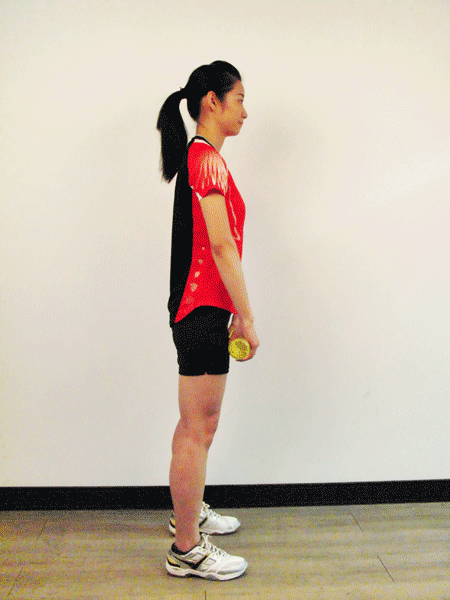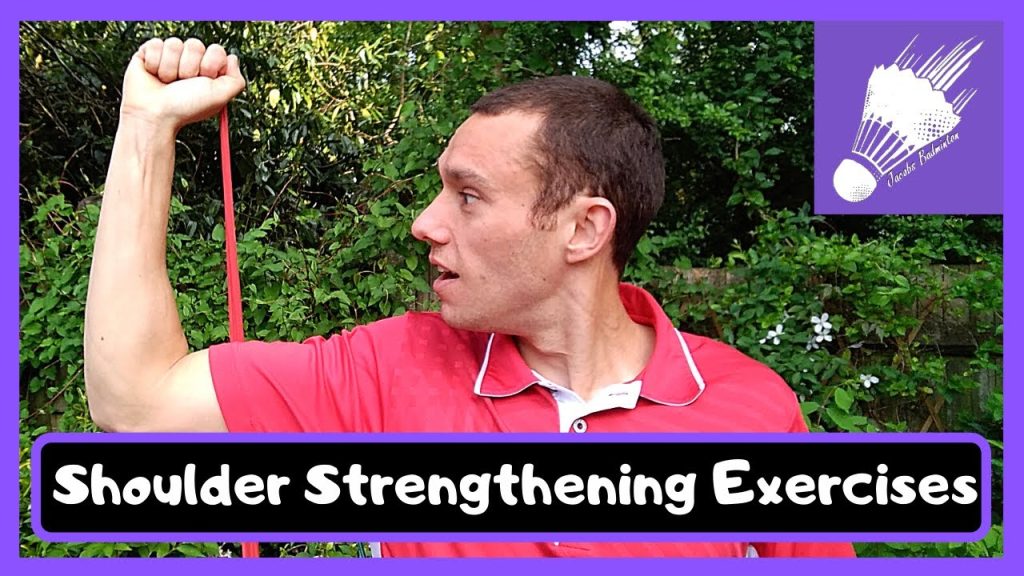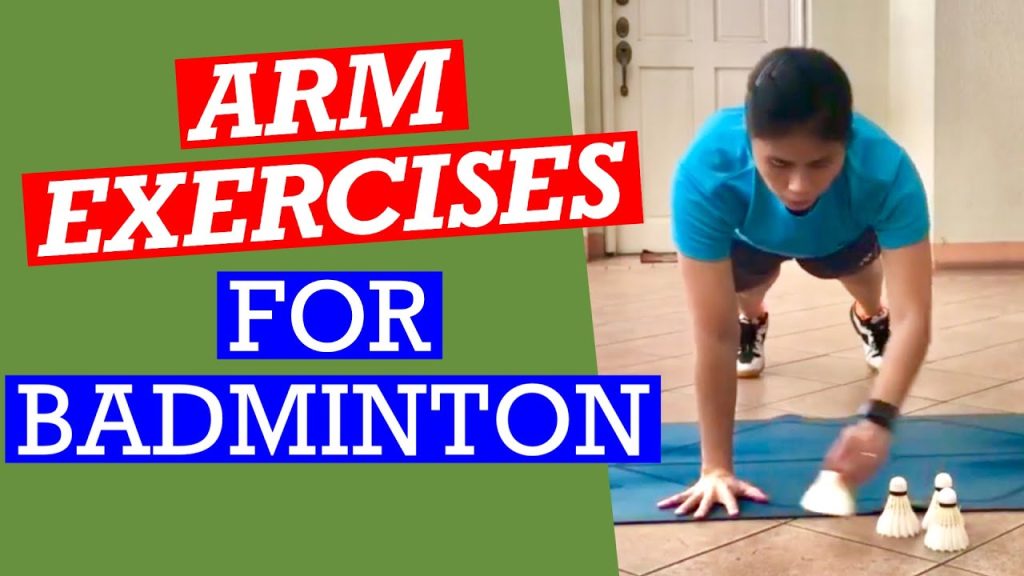Strong shoulders are essential for badminton players. They enhance performance and prevent injuries.
Badminton demands quick, powerful movements, putting significant stress on the shoulder joints. Without proper strength, players risk overuse injuries and decreased efficiency. Strength training tailored for badminton can make a significant difference. It helps build endurance, power, and stability in the shoulders.
This training also supports better control and precision during shots. Whether you are a beginner or an experienced player, incorporating shoulder strength exercises into your routine is vital. This guide will explore the best techniques and exercises to boost your shoulder strength for badminton, ensuring you stay fit and competitive on the court. Ready to elevate your game? Let’s get started!

Credit: www.badmintonjustin.com
Importance Of Shoulder Strength In Badminton
Badminton is a fast-paced sport that requires quick movements and powerful shots. The shoulder plays a vital role in delivering these powerful shots. Having strong shoulders can enhance your game, prevent injuries, and improve performance.
Role In Performance
Strong shoulders contribute to powerful and accurate shots. They help in executing smashes, clears, and drops with precision. Improved shoulder strength allows for better control and stability. This, in turn, boosts your overall performance on the court.
Key benefits of shoulder strength in badminton:
- Enhanced shot power
- Better accuracy
- Improved control
- Increased stability
Common Injuries
Weak shoulders are more prone to injuries. In badminton, common shoulder injuries include rotator cuff tears and shoulder impingement. These injuries can be painful and may sideline you for a long time.
| Injury | Symptoms |
|---|---|
| Rotator Cuff Tear | Pain, weakness, limited range of motion |
| Shoulder Impingement | Sharp pain, especially when lifting the arm |
Strength training can help in preventing these injuries. It can also aid in faster recovery if injuries do occur.
Anatomy Of The Shoulder
The shoulder is a complex joint. It offers a wide range of motion. This flexibility is vital for badminton players. Understanding the shoulder’s anatomy helps in training and injury prevention.
Muscles Involved
Several muscles work together to move the shoulder. The main muscles are:
- Deltoid: This muscle covers the shoulder. It lifts the arm and helps with rotation.
- Rotator Cuff: A group of four muscles. They stabilize the shoulder. They also assist in arm movement.
- Pectoralis Major: Located in the chest. It helps with arm flexion and rotation.
- Latissimus Dorsi: Found in the back. It aids in extending and rotating the arm.
- Teres Major: A small muscle. It assists in arm adduction and rotation.
Joint Structure
The shoulder joint is a ball-and-socket joint. It allows extensive movement. This joint comprises the following:
| Component | Function |
|---|---|
| Humerus | Upper arm bone. Fits into the shoulder socket. |
| Scapula | Shoulder blade. Provides attachment points for muscles. |
| Clavicle | Collarbone. Connects the arm to the body. |
| Glenoid Cavity | Part of the scapula. Forms the socket for the humerus. |
These components make the shoulder very mobile. This mobility is essential for badminton. Proper training keeps the shoulder strong and flexible.
Warm-up Exercises
Warm-up exercises are crucial for preventing injuries and improving performance in badminton. A good warm-up routine prepares your muscles and joints for intense activity. This is particularly important for shoulder strength training. Below are some effective warm-up exercises focusing on dynamic stretches and mobility drills.
Dynamic Stretches
Dynamic stretches help increase your heart rate and blood flow. They also improve your range of motion. Arm circles are a great dynamic stretch. Extend your arms and make small circles. Gradually make the circles bigger. Do this for 30 seconds in each direction.
Another effective stretch is the arm swing. Stand with your feet shoulder-width apart. Swing your arms forward and backward. Keep your movements controlled and smooth. Repeat for 30 seconds.
Mobility Drills
Mobility drills enhance your shoulder flexibility. They also prepare your joints for the demands of badminton. A good drill is the shoulder roll. Stand tall and roll your shoulders forward in a circular motion. Do this for 30 seconds, then reverse direction.
Scapular push-ups are another excellent drill. Get into a push-up position. Keep your arms straight. Move your shoulder blades together and then apart. Perform 10 to 15 repetitions.
Strength Training Exercises
Strength training exercises are essential for badminton players. They help improve shoulder strength and stability. A strong shoulder can prevent injuries and boost performance on the court. This section will cover two main types of strength training exercises: resistance band workouts and weightlifting routines. Both methods are effective and can be easily incorporated into your training regimen.
Resistance Band Workouts
Resistance bands are versatile and portable. They are great for shoulder exercises. To start, try the shoulder press. Stand on the band and hold the handles at shoulder height. Push the handles upward until your arms are fully extended. Lower them back to the starting position.
Another effective exercise is the lateral raise. Step on the band with your feet shoulder-width apart. Hold the handles by your sides. Lift your arms out to the sides until they are parallel to the ground. Lower them slowly.
The external rotation is also beneficial. Attach the band to a stable object. Stand with your side to the band. Hold the handle with the arm closest to the band. Keep your elbow bent at 90 degrees. Rotate your arm away from your body. Return to the starting position.
Weightlifting Routines
Weightlifting can significantly enhance shoulder strength. Dumbbell shoulder presses are a good starting point. Sit on a bench with a back support. Hold a dumbbell in each hand at shoulder height. Press the weights upward until your arms are extended. Lower them back down.
Another useful exercise is the front raise. Stand with your feet shoulder-width apart. Hold a dumbbell in each hand. Lift the dumbbells in front of you to shoulder height. Lower them slowly.
The bent-over reverse fly targets the rear shoulder muscles. Bend at the waist with a slight bend in your knees. Hold a dumbbell in each hand. Lift your arms out to the sides until they are parallel to the ground. Lower them back down.
Incorporating these exercises into your routine can make a big difference. Your shoulders will become stronger and more resilient. This can lead to improved performance and reduced injury risk on the court.
Plyometric Drills For Power
Plyometric drills are essential for enhancing shoulder power in badminton. These exercises involve rapid and repeated stretching and contracting of muscles. They help boost your explosive strength and agility on the court. Incorporating plyometric drills into your training can result in more powerful smashes and quicker reflexes.
Medicine Ball Throws
Medicine ball throws are effective for building shoulder power. Stand with feet shoulder-width apart. Hold a medicine ball with both hands. Bring the ball overhead. Then, throw it forcefully against a wall. Catch the ball on the rebound. Repeat for several reps. This drill mimics the rapid arm movements needed in badminton. It also strengthens your shoulders and upper body.
Explosive Push-ups
Explosive push-ups are great for developing upper body strength. Start in a standard push-up position. Lower your body until your chest nearly touches the floor. Push yourself up with enough force to lift your hands off the ground. Clap your hands together quickly before landing back in the starting position. This exercise not only targets your shoulders but also engages your chest and triceps. It builds the explosive power needed for quick, powerful shots in badminton.
Flexibility And Stretching
Flexibility and stretching are key components in badminton shoulder strength training. They help prevent injuries and improve performance. Regular stretching keeps your shoulders supple. It also helps maintain a full range of motion. Let’s explore some effective techniques to enhance your shoulder flexibility.
Static Stretches
Static stretches involve holding a position for a set period. These stretches lengthen the muscles. They improve flexibility and reduce muscle stiffness. One effective static stretch for shoulders is the cross-body stretch. Hold your arm across your body with the other arm. Maintain this position for 20-30 seconds. Repeat on the other side.
Another useful static stretch is the shoulder stretch. Stand tall and clasp your hands behind your back. Gently lift your hands upwards. Hold for 20-30 seconds. This stretch opens up the shoulders. It also improves posture.
Yoga For Shoulders
Yoga offers excellent stretches for shoulder flexibility. Poses like Downward Dog and Child’s Pose are beneficial. Downward Dog stretches the shoulders and spine. Start on your hands and knees. Lift your hips upwards to form an inverted V shape. Hold the pose for a few breaths.
Child’s Pose also stretches the shoulders. Kneel on the floor and sit back on your heels. Stretch your arms forward and lower your head to the floor. This pose relaxes the shoulders and back. Hold for 30 seconds to a minute.
Incorporating these stretches into your routine enhances shoulder flexibility. It prepares your shoulders for the dynamic movements in badminton. Consistent practice will yield noticeable improvements.
Recovery And Rest
Badminton players often push their bodies to the limit. Recovery and rest are crucial for maintaining shoulder strength and overall performance. Without proper recovery, even the best training can lead to injuries. Let’s explore the importance of recovery and the best techniques for rest.
Importance Of Recovery
Recovery is essential for muscle repair and growth. It helps in reducing muscle fatigue and soreness. Regular recovery can prevent long-term injuries and improve performance. Taking time to recover allows the shoulder muscles to rebuild stronger, enhancing your game.
Without proper recovery, the risk of overuse injuries increases. This can lead to shoulder pain and reduced mobility. Giving your muscles the needed rest ensures they stay healthy and strong.
Techniques For Rest
Resting effectively can be achieved through various techniques. Here are some of the best methods:
- Sleep: Aim for 7-9 hours of sleep each night. Sleep is when the body heals and repairs itself.
- Active Recovery: Engage in light activities like walking or gentle stretching. This helps keep the blood flowing without straining the shoulder.
- Hydration: Drink plenty of water. Staying hydrated helps in muscle recovery and reduces fatigue.
- Nutrition: Eat a balanced diet rich in proteins, vitamins, and minerals. Proper nutrition supports muscle repair.
Using a mix of these techniques ensures effective rest and recovery. Prioritize these methods to maintain shoulder strength and overall health.

Credit: www.youtube.com
Preventing Shoulder Injuries
Badminton is a fast-paced sport that requires quick movements and strong shoulders. Preventing shoulder injuries is crucial for every player. Injuries can sideline you and affect your performance. Proper training and techniques help in avoiding these setbacks.
Proper Technique
Using the proper technique reduces the risk of shoulder injuries. Focus on your posture and movements. Keep your shoulders relaxed and avoid overextending. Practicing correct strokes helps in maintaining shoulder health. Always warm up before playing to prepare your muscles.
Strength Imbalance Correction
Strength imbalance in your shoulders can lead to injuries. Regular exercises can help in correcting these imbalances. Include both pushing and pulling exercises in your routine. Work on your rotator cuff muscles. This strengthens and stabilizes your shoulders.
Consult a coach or a trainer for personalized exercises. They can help you identify and correct imbalances. Consistent training is key to maintaining shoulder strength and preventing injuries.

Credit: www.victorsport.com
Frequently Asked Questions
What Exercises Strengthen Shoulders For Badminton?
Performing exercises like shoulder presses, lateral raises, and rotator cuff exercises can strengthen shoulders. These exercises improve stability and power, enhancing your performance on the court.
How Often Should I Train Shoulders For Badminton?
Train shoulders two to three times per week. This frequency allows for muscle growth and recovery, preventing overuse injuries.
Why Is Shoulder Strength Important In Badminton?
Strong shoulders provide stability, power, and endurance. This helps in executing powerful smashes and maintaining long rallies.
Can Shoulder Training Prevent Badminton Injuries?
Yes, shoulder training can prevent injuries by strengthening muscles and stabilizing joints. This reduces the risk of strains and dislocations.
Conclusion
Strong shoulders are vital for badminton success. Consistent training boosts your performance. Proper exercises prevent injuries and enhance endurance. Prioritize shoulder strength in your routine. Progress will come with patience and dedication. Remember to warm up before workouts. Cooling down after sessions is equally important.
Stay motivated, and you’ll see results. Your improved game will reflect your hard work. Keep pushing forward and enjoy the journey.



